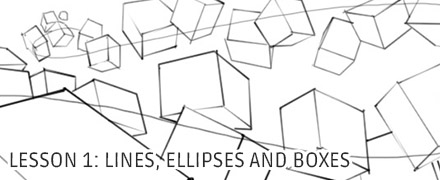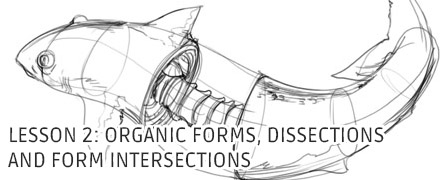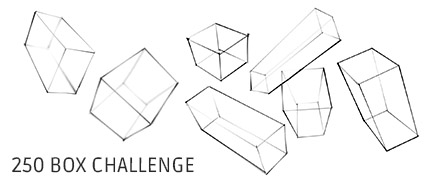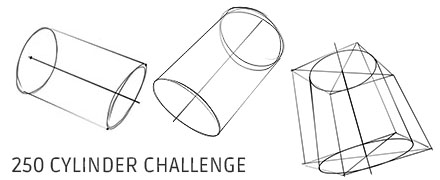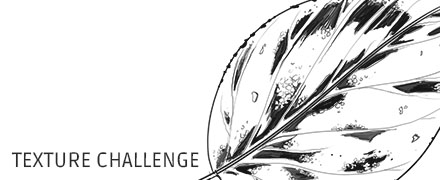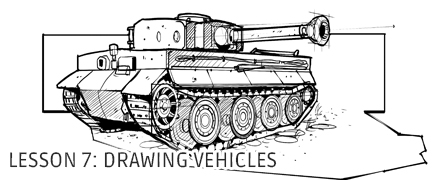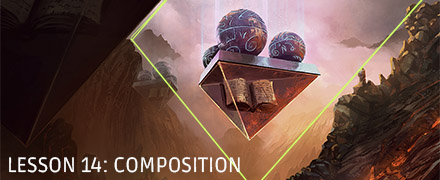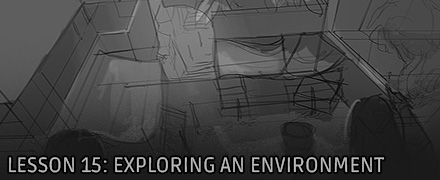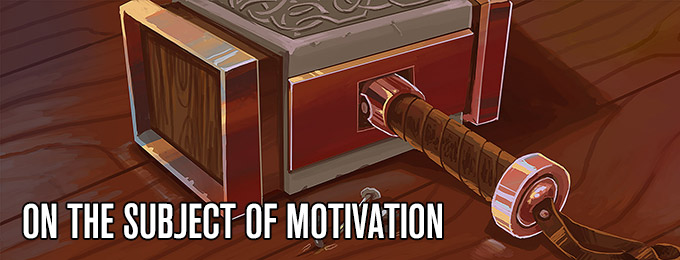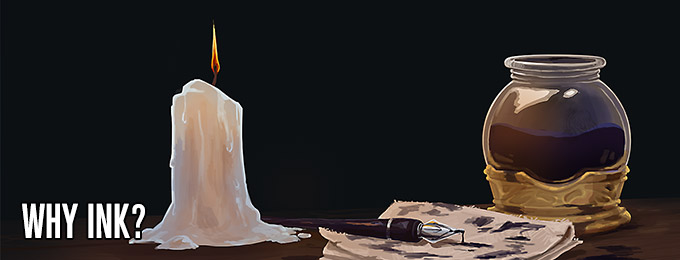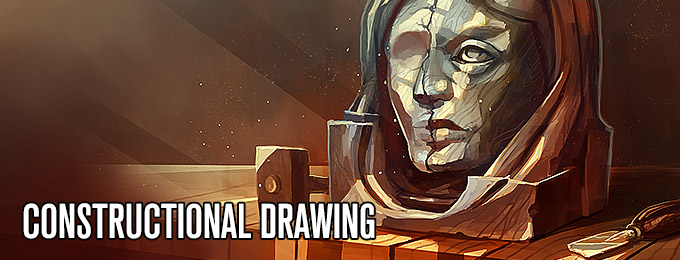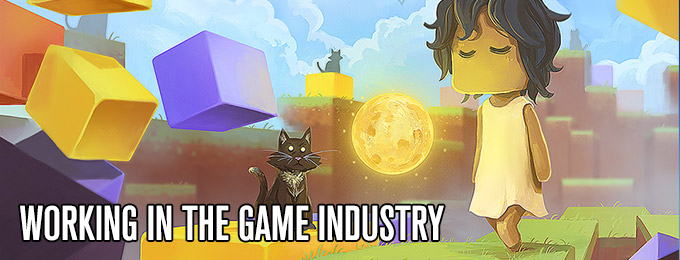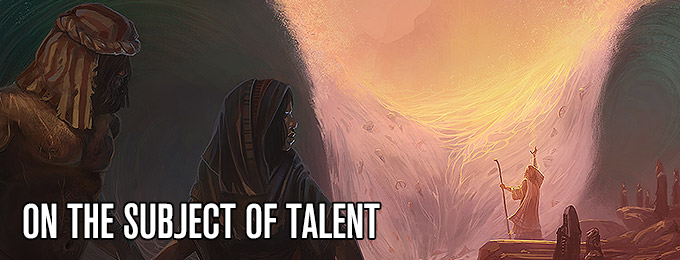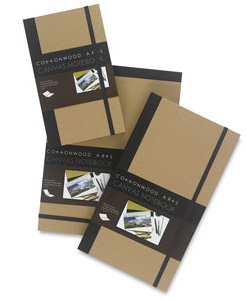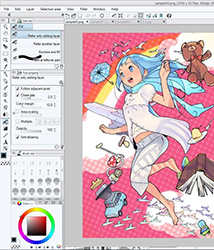Uncomfortable's Recommendations
Advertising is one of the ways I keep this website going, but that doesn't mean that I can't do it while adding value to this website. Below you'll find a handful of things that I own, or have used in the past, that I would like to recommend to you. The links themselves are part of the Amazon Affiliate program. If you have any art books, software or tools that you love and think should be listed here, let me know and I'll check them out.
Instructional Books
How to Draw: Drawing and Sketching Objects and Environments from your Imagination
by Scott Robertson
When it comes to technical drawing, there's no one better than Scott Robertson. I regularly use this book as a reference when eyeballing my perspective just won't cut it anymore. Need to figure out exactly how to rotate an object in 3D space? How to project a shape in perspective? Look no further.
Color and Light by James Gurney
Some of you may remember James Gurney's breathtaking work in the Dinotopia series. This is easily my favourite book on the topic of colour and light, and comes highly recommended by any artist worth their salt. While it speaks from the perspective of a traditional painter, the information in this book is invaluable for work in any medium.
Rapid Viz by Kurt Hanks and Larry Belliston
Rapid Viz is a staple of visual communication and dynamic sketching that has been around for ages, and is definitely one to check out. Unlike Drawabox's emphasis on thinking through everything you do, it focuses on getting what's in your brain onto the page quickly, which is an asset when it comes to ideation, iteration and design.
Tools
Cottonwood Arts Sketchbooks
These are my favourite sketchbooks, hands down. Move aside Moleskine, you overpriced gimmick. These sketchbooks are made by entertainment industry professionals down in Los Angeles, with concept artists in mind. They have a wide variety of sketchbooks, such as toned sketchbooks that let you work both towards light and towards dark values, as well as books where every second sheet is a semitransparent vellum.
The amazon seller only ships within the united states, but the Cottonwood Arts website ships internationally.
Staedtler Pigment Liner Pens 0.5mm
To put it simply, these are the pens I use. They're not the best pens (nor the worst) you can get, but they've served me well, and they're a good balance of quality and price. If you have access to a local art supply store, I strongly recommend that you buy your pens in person. Reason being, most art supply stores will sell pens individually and allow you to test them out before you buy them (there's usually a big strip of paper with scribbles all over it next to the pens), so you can avoid duds with poor ink flow.
Pentel Arts Pocket Brush Pen
This is a remarkable little pen. Technically speaking, any brush pen of reasonable quality will do, but I'm especially fond of this one. It's incredibly difficult to draw with (especially at first) due to how much your stroke varies based on how much pressure you apply, and how you use it - but at the same time despite this frustration, it's also incredibly fun. Moreover, due to the challenge of its use, it teaches you a lot abount the nuances of one's stroke. These are the kinds of skills that one can carry over to standard felt tip pens, as well as to digital media. Great for doodling. Check out Scott Robertson's video on this pen.
Software
Adobe Creative Cloud Photography Plan - Adobe Photoshop for just $9.99/month (1 year upfront)
A lot of you are used to the idea that Adobe Photoshop is ridiculously expensive, all pie-in-the-sky, and that when they shifted to a subscription-based model, things just got worse. Turns out, Creative Cloud actually puts Photoshop right within students and beginners' grasp. The full suite costs upwards of $50/month, but if all you're after is Photoshop, you can grab it as part of the Photography Plan for $9.99/month. That's less than $120 a year. Just keep in mind that you do have to pay the full year in advance.
So, if you're interested in getting into digital illustration, the software most industry professionals use is well within your reach.
Clip Studio Paint Pro
Generally speaking, I don't really stray far from Photoshop unless I'm forced to, but this is a major exception. I can't stand using Photoshop for any kind of clean, crisp line art - it's probably one of the reasons I've pretty much stuck to digital painting. When it came time to learn how to deal with line art (to make comics for drawabox), Clip Studio Paint was a life saver. I definitely recommend it for any kind of comic work.
Art Books
The Art of Blizzard Entertainment
While I have a massive library of non-instructional art books I've collected over the years, there's only a handful that are actually important to me. This is one of them - so much so that I jammed my copy into my overstuffed backpack when flying back from my parents' house just so I could have it at my apartment. My back's been sore for a week.
The reason I hold this book in such high esteem is because of how it puts the relatively new field of game art into perspective, showing how concept art really just started off as crude sketches intended to communicate ideas to storytellers, designers and 3D modelers. How all of this focus on beautiful illustrations is really secondary to the core of a concept artist's job. A real eye-opener.
The Art of Brom
Here we're getting into the subjective - Gerald Brom is one of my favourite artists (and a pretty fantastic novelist!). That said, if I recommended art books just for the beautiful images contained therein, my list of recommendations would be miles long.
The reason this book is close to my heart is because of its introduction, where Brom goes explains in detail just how he went from being an army brat to one of the most highly respected dark fantasy artists in the world today. I believe that one's work is flavoured by their life's experiences, and discovering the roots from which other artists hail can help give one perspective on their own beginnings, and perhaps their eventual destination as well.

